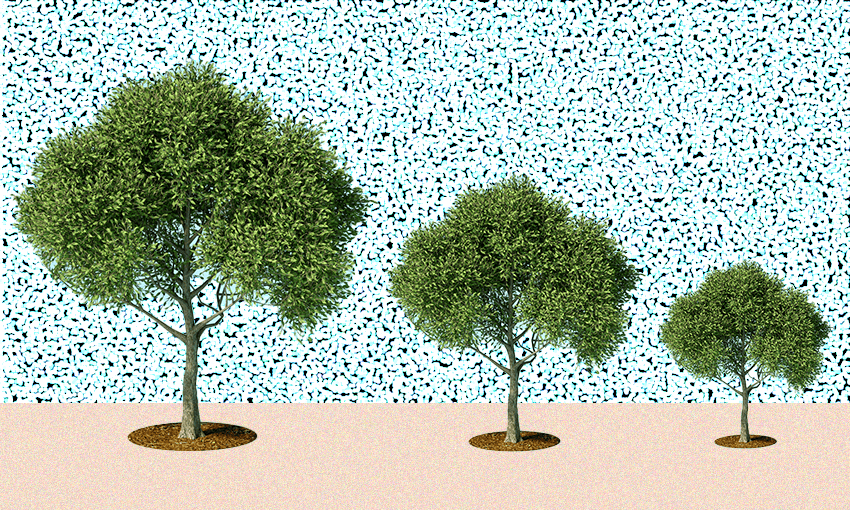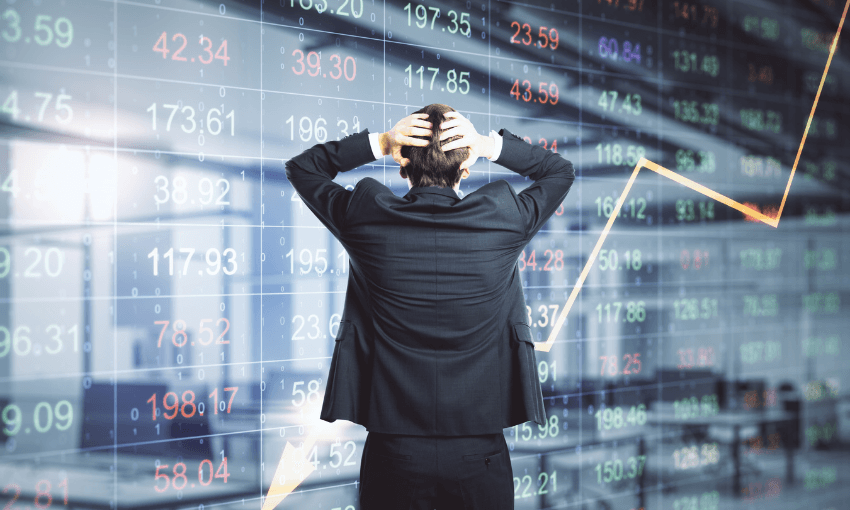Economic growth may have helped improve living standards, but it’s also driving the world toward climate catastrophe. Could the future look fundamentally different? Reweti Kohere went along to find out more about a seemingly radical vision of global economies.
By all accounts, we’re screwed. Not one of the United Nation’s 17 sustainable development goals – set in 2015 and including aims like ending poverty, achieving gender equality and reducing marine pollution – will be achieved by the agreed deadline of 2030. By mid-century, the goal of net zero carbon emissions won’t have been achieved. In fact, global gross domestic product should double to US$165 trillion as resource and energy consumption rises by 50%, and fossil fuel use increases 30%. By the end of the 21st century, humans will not have kept global warming under the legally binding limit of 1.5 degrees Celsius.
“We are delivering our descendants into a hothouse earth,” warned emerging business sustainability researcher Jennifer Wilkins. But the kicker is this: more and more people are realising sustainability isn’t possible with economic growth continuing unfettered. Yes, it has prolonged life and reduced child mortality, helped fund breakthroughs in treatments, vaccines and medicines, and led to electricity and central heating. But it has also created a world of haves and have-nots. Capitalism in the last decade may have turned a pale shade of green as governments, industry and businesses accept that shifting toward a low-carbon future is necessary and urgent. But empirical evidence and medium-term projections suggest “sustainable growth” is futile.
Is there an alternative pathway, Wilkins asked – one in which sustainability does away with growth? As part of Auckland Climate Festival’s 2022 annual programme of events throughout October to inspire quicker climate action in Tāmaki Makaurau, about 60 people heard from Wilkins and three other panellists about the idea of “degrowth”.
According to one prominent definition by degrowth economist Jason Hickel, the concept envisions rich democratic countries shrinking their economies to bring them back into balance with the living world, while still reducing inequality and improving people’s wellbeing. The economic concept emerged in the 1970s, and more recently interest has been – sorry – growing. In the last 10 years, degrowth scholarship has increased tenfold and earlier in 2022, in a “profound” move, the Intergovernmental Panel on Climate Change picked up the concept for the first time.
Besides the obvious – that more growth is actually bad for the planet – degrowth has proven fairly controversial. Critics dismiss the concept as radical, pointing out it doesn’t add up and implementation will be nearly impossible. Most carbon emissions in the coming decades will originate in developing countries as they grow their economies to bring people out of poverty and improve living standards. But it’s unlikely China, India and Indonesia will agree to stymie their aspirations to help richer nations shrink theirs. As a result, detractors doubt that global poverty can be alleviated without economic growth. Even Wilkins admits that while Hickel’s definition explains “the why, the how and the who”, it fails to articulate “the what, the where and the when”.
Among “degrowthers” too, there’s disagreement about what must shrink – some focus on reducing GDP through cuts to goods and services, others push for limiting throughput of resources and energy. Some believe economies can keep growing while reducing greenhouse gas emissions, others believe “decoupling” won’t suffice to meet climate targets. Mainstream economists are right to be concerned that degrowth would cause economic recession, Wilkins said. Economies have been structured to depend on growth for stability. By contrast, degrowthers desire wholesale restructure.
There may be theoretical problems, but degrowth is being put into practice. In 2015, France broke ground in defining and outlawing “planned obsolescence”, the manufacturing practice of deliberately reducing the life of products to increase their replacement rate. The US, Finland and Kenya have trialled universal basic income programmes that prevent vulnerable groups from falling deeper into poverty by giving free, no-strings-attached money.
Panellist Ben van Bruggen, an urban planner and designer, explained how cities are getting more out of their multi-storey buildings, and constructing fewer buildings too, by catering to multiple needs. For instance, cinemas and other forms of entertainment might occupy one floor, apartments and hotels could outfit other floors higher up, retail shops on the ground floor could capture foot traffic while transport hubs underneath connect.
Bill Murphy, the founder of New Zealand’s largest impact investment fund Purpose Capital, said that degrowth-aligned businesses already exist, such as ride-sharing companies Zlich and Mevo, and Envico, whose drone technology helps detect and control invasive species. Degrowth is happening in all but name – but there’s still a lot more to do.
Degrowth isn’t new to te ao Māori
Any action in Aotearoa must engage with mātauranga Māori, for tangata whenua have always been doing degrowth, said Tori McNoe (Te Arawa, Ngāti Raukawa), the commercialisation development lead at Auckland University’s research support centre UniServices. In te ao Māori, humans are embedded within nature. Their relationship with the land is material and spiritual and the system for producing goods and services is just one facet. Māori economics is so ingrained in Papatūānuku, however, that all economic relationships are at once social, spiritual and ecological. At its heart, Māori economics is environmental in conception and practice.
“Ideally, I don’t necessarily need you to leave here having changed your worldview. But maybe knowing that you’ve got one is a good place to start,” McNoe told attendees as she shared the Tairāwhiti pūrākau of how kūmara came to exist in Aotearoa. It’s because of Pourangahua that his mokopuna started cultivating the sweet potato, for he journeyed to a far-flung island to find the food his son kept craving every time the boy poked his tongue out at the moana. But in not upholding promises made to the tohunga who gifted the crop, Pourangahua’s unkindness resulted in the poisoning of kūmara planted in New Zealand; Māori would have to work twice as hard to cultivate the crop, and it wouldn’t always flourish.
Decrypting the pūrākau revealed a wealth of indigenous knowledge, McNoe said. People must observe the conditions by which resources grow, and respect their environmental limits. Otherwise, their exploitation jeopardises the inheritance of future generations. More broadly, the process of achieving a goal is as important as the destination itself. The “prize” may be a fundamentally different economy, but it’s “interrelated [with] all of the things that come before it”, she said. Much like degrowth challenges the notion of unrelenting growth at Earth’s expense, the pūrākau of Pourangahua challenged attendees’ perspectives.
Wilkins urged political and business leaders to show courage in calling for degrowth as the new normal. Some 25 minutes earlier, in a fleeting appearance, climate change minister James Shaw joked that attendees had three hours to solve how Aotearoa could downscale the economy, “and then please, pass me the notes so that we can get on with it”. New Zealand had to have a “critical conversation” about degrowth, he said.
“I don’t think we’re going to be able to survive as a civilisation, as a species, and we’ll probably take the rest of the planet with us unless you work it out.” For a concept that lends itself easily to puns and jokes, degrowth is no laughing matter.

